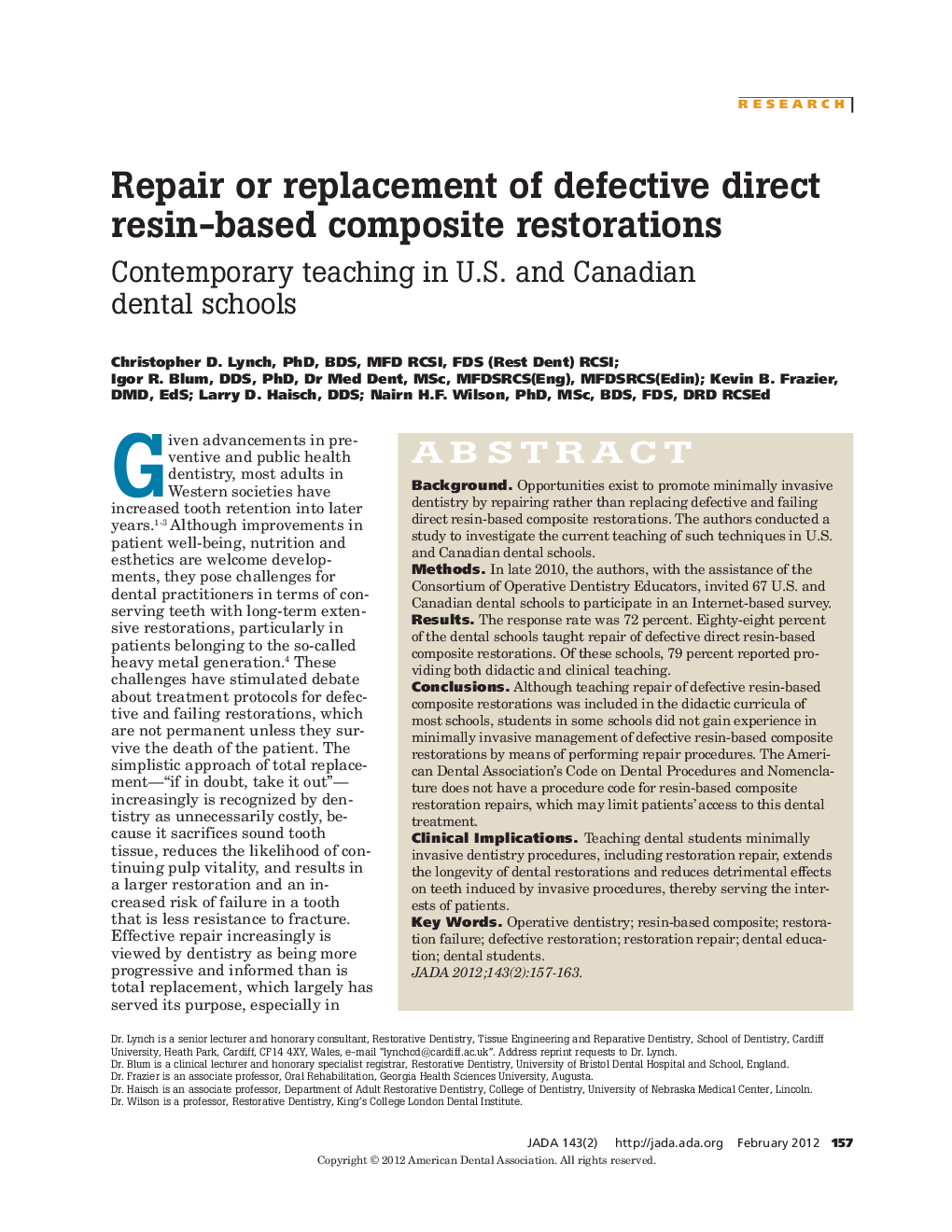| Article ID | Journal | Published Year | Pages | File Type |
|---|---|---|---|---|
| 3137954 | The Journal of the American Dental Association | 2012 | 7 Pages |
ABSTRACTBackgroundOpportunities exist to promote minimally invasive dentistry by repairing rather than replacing defective and failing direct resin-based composite restorations. The authors conducted a study to investigate the current teaching of such techniques in U.S. and Canadian dental schools.MethodsIn late 2010, the authors, with the assistance of the Consortium of Operative Dentistry Educators, invited 67 U.S. and Canadian dental schools to participate in an Internet-based survey.ResultsThe response rate was 72 percent. Eighty-eight percent of the dental schools taught repair of defective direct resin-based composite restorations. Of these schools, 79 percent reported providing both didactic and clinical teaching.ConclusionsAlthough teaching repair of defective resin-based composite restorations was included in the didactic curricula of most schools, students in some schools did not gain experience in minimally invasive management of defective resin-based composite restorations by means of performing repair procedures. The American Dental Association's Code on Dental Procedures and Nomenclature does not have a procedure code for resin-based composite restoration repairs, which may limit patients' access to this dental treatment.Clinical ImplicationsTeaching dental students minimally invasive dentistry procedures, including restoration repair, extends the longevity of dental restorations and reduces detrimental effects on teeth induced by invasive procedures, thereby serving the interests of patients.
